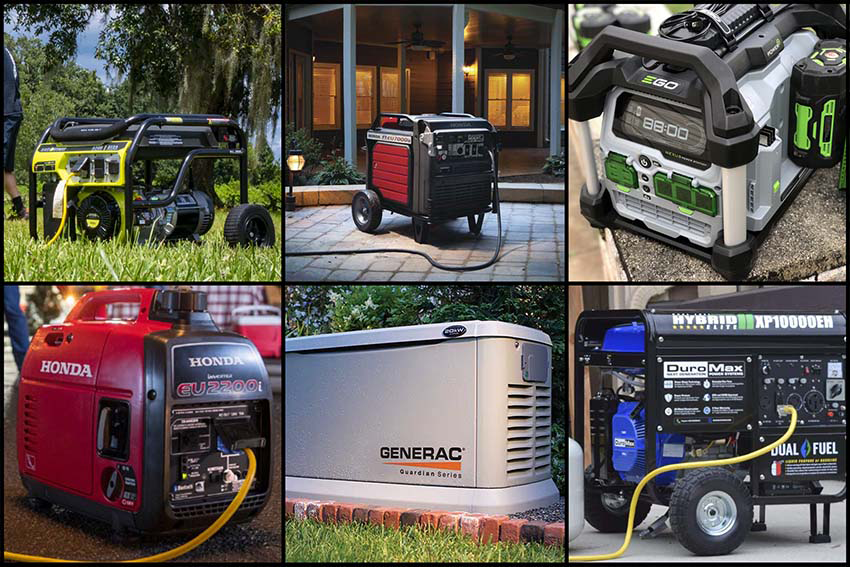
In the ever-evolving power generation landscape, A Reliable Generators are robust solutions, providing essential electricity during emergencies or off-grid settings. A pivotal concern for users of generators is ensuring an uninterrupted and dependable power supply. One of the methods to achieve this is by comprehensively understanding and implementing the process of charging a battery with a generator. This extensive guide aims to delve even deeper into the intricacies of this process, exploring its nuanced benefits and step-by-step procedures addressing crucial considerations for individuals relying on generators and emphasizing the importance of a seamless power supply, especially in off-grid living, emergency preparedness, and hybrid energy systems.
Understanding the power flow within the generator system is crucial for optimizing the charging process. Let’s explore the generator flow with a comprehensive guide to charging batteries.
Understanding the Basics?
Before delving into the detailed exploration of charging a battery with a generator, let’s solidify our understanding of the fundamental workings of both components.
The primary function of generators is to transform mechanical energy into electrical energy. Generators offer a flexible way to meet various energy requirements because they may run on different fuels, including natural gas, propane, diesel, or gasoline. Batteries, used in multiple applications, from home energy installations to automobile systems, are at the other end of the power spectrum. They function as power storage units.
The symbiotic relationship between generators and batteries becomes particularly evident when a consistent power supply is paramount. Charging a battery with a generator offers a strategic solution in situations such as off-grid living, emergency preparedness, and hybrid energy systems, amplifying the reliability and versatility of these power sources.
Why Charge a Battery with a Generator?
Off-Grid Living
Off-grid dwellers rely heavily on generators as their primary source of electricity. Charging batteries in this context allows for the efficient storage of excess energy generated during peak times, ensuring a continuous power supply during periods of low generator output. This approach maximizes the utilization of generated power without solely relying on real-time production.
Emergency Preparedness
Generators are pivotal during power outages triggered by natural disasters or emergencies. Charging batteries is a strategic measure to guarantee a continuous power supply for essential devices such as medical equipment, communication devices, and lighting. It becomes a critical lifeline during challenging situations, ensuring individuals can easily navigate through emergencies.
Backup Power for Renewable Energy Systems
Hybrid energy systems, integrating renewable sources like solar or wind with generators, can benefit significantly from battery charging. Batteries serve as a reservoir for excess energy generated by renewables, ensuring a seamless transition to backup power when primary sources are insufficient.
The Comprehensive Process of Charging a Battery with a Generator
Now that we have established the significance of charging a battery with a generator let’s delve into a detailed, step-by-step process to execute this seamlessly.
Select the Right Generator
The foundation of the charging process lies in selecting a generator with the correct specifications for battery charging. Some generators have built-in inverters or charging capabilities, while others may require external accessories. It’s imperative to match the generator’s capacity with the charging requirements of the battery, ensuring an optimal and efficient charging process.
Check Battery Compatibility
The key to a successful charging process is compatibility. Verify that your battery aligns with the generator’s charging capabilities and that the process adheres to the battery’s specifications. Different batteries have varying voltage and current requirements, and neglecting these specifics can lead to inefficient charging or potential damage.
Connect the Battery
The physical connection between the generator and the battery is a critical step. Using appropriate cables, connect the positive and negative terminals of the battery to the corresponding terminals on the generator. Following the manufacturer’s cable size, quality, and connection sequence guidelines is crucial to prevent electrical hazards and ensure an efficient charging process.
Start the Generator
Once the battery is securely connected, initiate the startup sequence for the generator following the manufacturer’s instructions. As the generator comes to life, it begins supplying power to the battery for charging. Some generators may have specific settings or modes for charging, and familiarity with the unit’s manual is essential for optimal results.
Monitor Charging Progress
Vigilance during the charging process is paramount. Regularly check and monitor the charging progress to prevent overcharging, which can harm the battery’s health. Some modern generators have built-in charging controllers that automatically regulate charging, providing convenience and safety.
Considerations and Advanced Tips
While the basic process of charging a battery with a generator is relatively straightforward, several advanced considerations and tips can further enhance the efficiency and safety of the entire operation.
Generator Capacity
Understanding the capacity of your generator is crucial. Exceeding the generator’s degree can lead to inefficient charging and potentially damage the generator or the connected battery. Refer to the generator’s specifications and guidelines to ensure it can handle the charging requirements of your battery.
Battery Type
Batteries come in various types, such as lead-acid, lithium-ion, and others, each with unique charging characteristics. It’s imperative to understand the specific requirements of your battery type to optimize the charging process. Different batteries may require different charging voltages, currents, and charging profiles.
Safety Precautions
Safety should always be a top priority when dealing with electrical components. Follow the manufacturer’s guidelines for both the generator and the battery. Use appropriate protective gear and work in well-ventilated areas, especially when dealing with generators powered by fossil fuels, to mitigate the risk of carbon monoxide poisoning.
Regular Maintenance
Establish a routine for regular maintenance checks on the generator and the battery. Clean terminals, inspect cables for wear and tear and address any issues promptly. Regular maintenance ensures both components’ longevity and optimal performance, providing peace of mind regarding reliability.
Incorporating Smart Technology
Consider utilizing intelligent technologies and accessories that can enhance the charging process. Smart inverter generators and chargers, for instance, can provide real-time data on charging status, battery health, and energy consumption. This data can be instrumental in optimizing the charging process and improving overall system efficiency.
Conclusion
In conclusion, charging a battery with a generator is a versatile and practical solution for many scenarios, offering a reliable and continuous power supply. Whether you find yourself living off-grid, preparing for potential emergencies, or integrating a generator into a hybrid energy system, understanding the intricacies of this process is paramount. Individuals can ensure a seamless and dependable power supply in diverse situations by harnessing the cooperation between generators and batteries and adhering to safety guidelines. Empower your resilience by unlocking the full potential of generators and batteries in tandem, embracing the detailed insights and advanced tips in this comprehensive guide.





